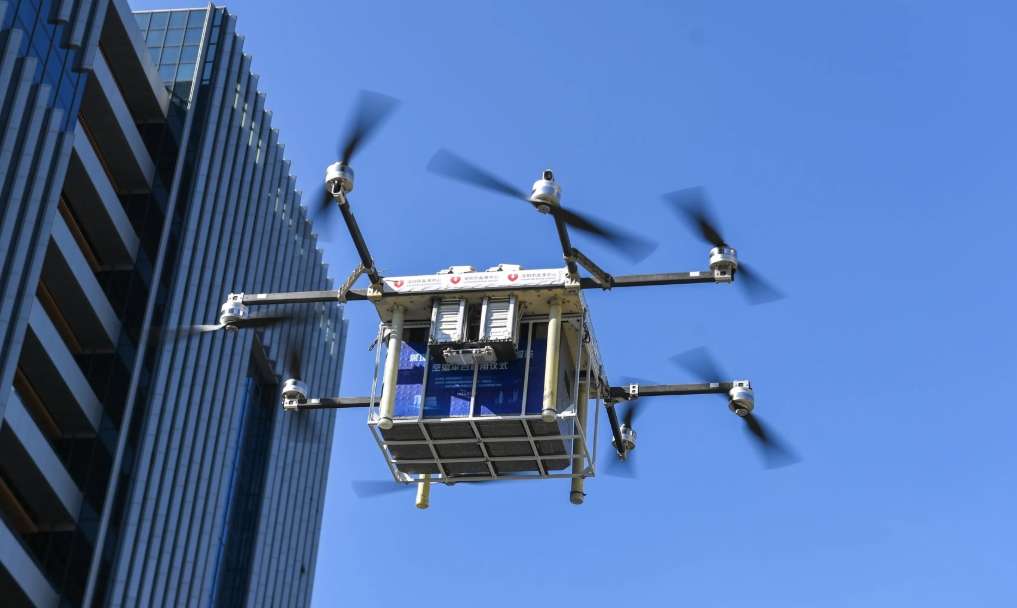
When an 80-meter-long wind turbine blade rotates in howling winds,or a hundred-meter-long photovoltaic(PV)array silently generates power under the scorching sun of the Gobi Desert,these large metal components of new energy facilities are like steel behemoths of modern industrial civilization.Traditional inspection methods struggle with the challenges of height,danger,and high costs—engineers hang trembling in baskets hundreds of meters in the air to tap on blades,or step on PV panels to check for hot spot damage one by one.At this moment,a group of industrial drones equipped with intelligent sensors is quietly changing the rules.
The"Impossible Triangle"of Extra-Large Structural Inspection
The inspection of giant components such as wind turbine main shafts,towers,and PV tracking brackets has long faced three contradictions:
• The Battle Between Precision and Efficiency:Manual inspection of a single wind turbine blade takes 8 hours,while a crack at the 0.1 mm level may be hidden 30 meters in the air.
• The Paradox of Safety and Coverage:Internal inspection of a nuclear reactor pressure vessel requires setting up several layers of scaffolding,with shutdown costs reaching millions of dollars per day.
• The Disconnect Between Data and Decision-Making:Discrete data obtained by traditional methods is difficult to construct a full life cycle model of large metal components after processing.
These are the underlying reasons why PV power stations lose 5%of their power generation due to hot spots every year,and wind turbine blade leading edge corrosion leads to a 30%increase in downtime.
The Triple Evolution of Drone Inspection Systems
• Millimeter-Level Defect Detection:Surpassing the Limits of the Human Eye
• Equipped with a 40 million pixel optical zoom gimbal,it can identify micro-cracks 0.3 mm wide on the surface of blades at a distance of 20 meters.
• The thermal imaging module captures temperature differences of 0.1°C in PV modules,accurately locating hidden cracks in solar cells.
• The LiDAR maps the flatness error of the tower flange with an accuracy of±0.05 mm,comparable to a coordinate measuring machine.
• Autonomous Intelligent Patrol:Redefining Inspection Logic
• Automatically planning routes based on BIM models to conduct 360°blind-spot-free scanning of monopile foundations for offshore wind power.
• The intelligent obstacle avoidance system autonomously navigates through the pipe racks of a refinery to inspect weld quality.
• The inspection efficiency of the entire photovoltaic power station is increased by 40 times,completing the scanning of a hundred-megawatt-level power station in 2 hours.
• Digital Twin Closed Loop:The Leap from Inspection to Decision-Making
• Intelligent comparison of point cloud data with the original design model of CNC machining,automatically marking tower flanges with insufficient bolt preload.
• Deep learning analyzes images of blade leading edge corrosion,predicts remaining life,and generates a maintenance priority map.
• Establishing a deformation database for large metal components after processing,providing feedback for the design of the next generation of wind turbine main shafts.
The Value Cycle of Machining and Inspection
A practice at a 10GW photovoltaic power station reveals a deeper linkage:
• Drones discovered that the wear of the tracking bracket rotation axis is concentrated in specific angle ranges.
• Data feedback to the metal precision parts machining stage,optimizing the surface heat treatment process of the rotation axis.
• The failure rate of the bracket is reduced by 67%,and the annual power generation is increased by 2.2 million kilowatt-hours.
Similarly applied to wind turbine gearboxes:
• Tracing the processing deformation area through the vibration thermogram of the gearbox housing.
• Adjusting the clamping scheme during the machining of large metal parts to reduce residual stress.
• The accuracy of early failure warning for gearboxes is increased to 92%.
The New Industrial Paradigm Created by Aerial Robots
When drone swarms fly over rows of photovoltaic matrices,they are not only inspection tools but also aerial links connecting the physical and digital worlds.When working in coordination with ground robots—drones locate the damage,and ground robots carry out grinding and repair—this air-ground collaboration is redefining the operation and maintenance logic of extra-large facilities.
In traditional manufacturing perception,the end point of machining metal precision parts is the quality inspection table.Today,drones flying hundreds of meters in the air are extending the inspection node to the entire product life cycle.When wind turbine blades generate digital twins in the clouds,and the thermograms of photovoltaic power stations drive the evolution of machining processes,this dynamic closed loop is like injecting a breathing neural network into new energy equipment.
Extra-large structures are no longer silent steel behemoths.Under the"eyes"of industrial drones,they begin to speak the precise language of stress,fatigue,and life—this is the poetic dialogue that the intelligent age has given to modern manufacturing.